The 10 February 1934 "BUCEPHALE" SFNH letter with a newly detected New Hebrides postmark
1925
S.S. BUCEPHALE registration cachet

S.S. BUCEPHALE registration cachet Goyns-Klinger Type NR12 known from this date 1934 until 1937 (graphically enhanced)
The SFNH seal
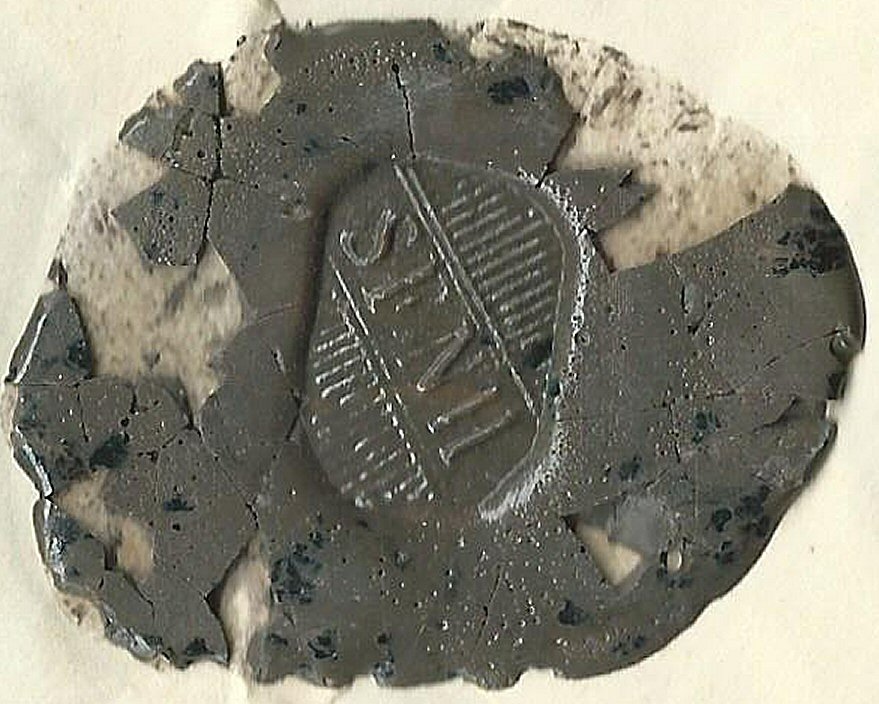
The grey SFNH seal on reverse.
The Paris 42, rue Balzac Post Office arrival backstamp.
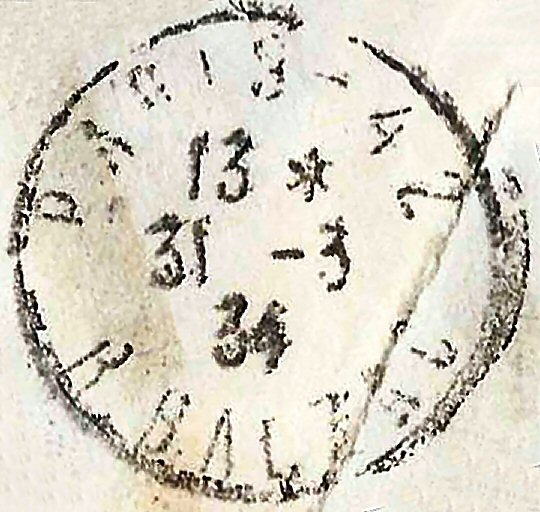
The Paris 42, rue Balzac Post Office arrival backstamp. (graphically enhanced)
The VILA Post Office backstamp GK Type PM7B "14 FE 34".
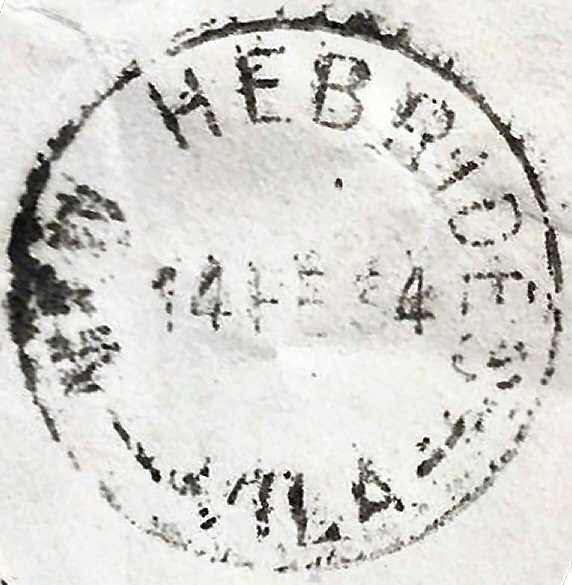
The VILA Post Office backstamp GK Type PM7B "14 FE 34". (graphically enhanced)
The MM steamer BUCÉPHALE
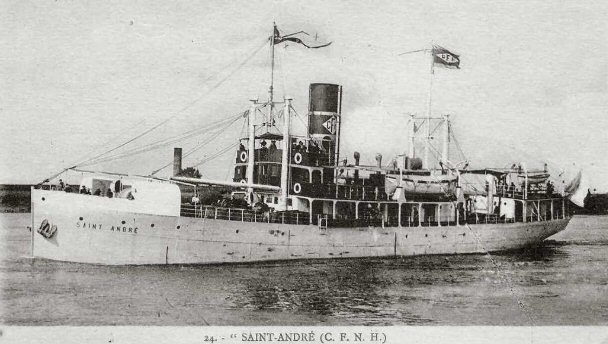
Le Bucéphale, ex Saint André, was built in 1925 at Hoboken, Belgium, for the Société Navale de l'Océanie (Compagnie Ballande) and later
bought by the Comptoir Français des Nouvelles Hébrides (C.F.N.H.). In 1931 she was chartered and in 1932 bought by the Messageries Maritimes for the
inter island runs in the New Hebrides and collecting of copra in the islands. She ran on a reef and was lost on 14 June 1937 in Teouma Bay (south west Efate).
Debris of the ship is still lying on the beach there.
Information thanks to Philippe Ramona's Messageries Maritimes site.
The P&O steamer R.M.S. MOLDAVIA
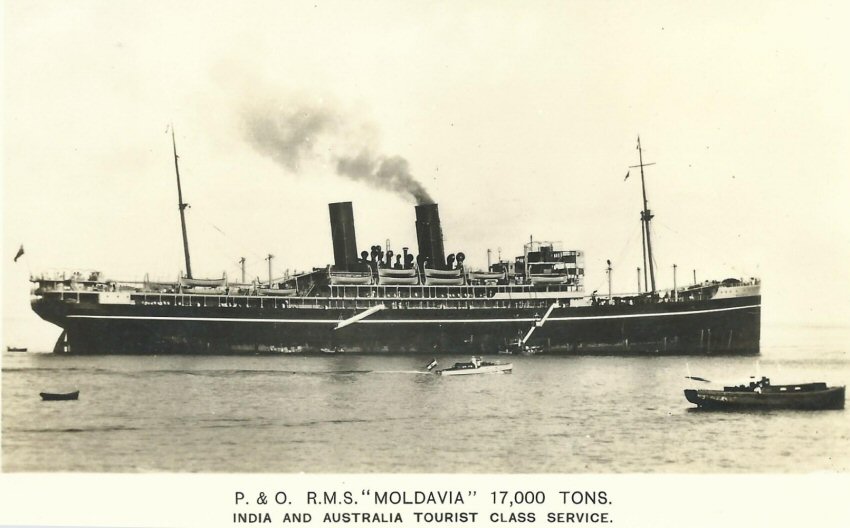
R.M.S. MOLDAVIA was built in 1922 this ship was scrapped in 1938. An astonishable short lifetime for an ocean liner!

This remarkable cover shows a postmark which has not been detected as unknown so far. It is very probable that more items with
this postmark exist in collections of New Hebridean postal history but have been undiscovered because of the affinity to common postmarks.
You may want to look carefully at your items: maybe another piece can be found!
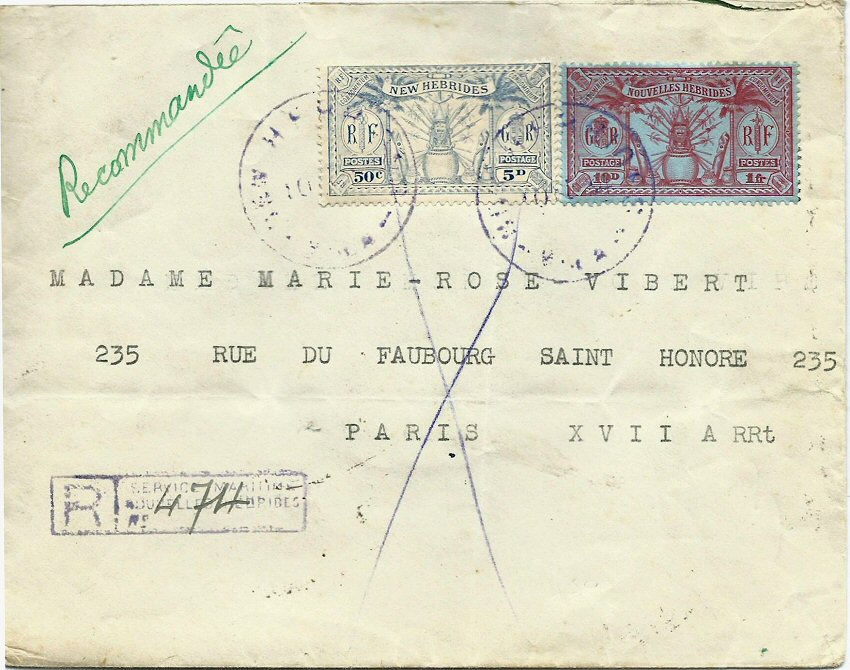
SFNH BUCEPHALE cover to France 10 February 1934
SFNH BUCEPHALE cover to France 10 February 1934
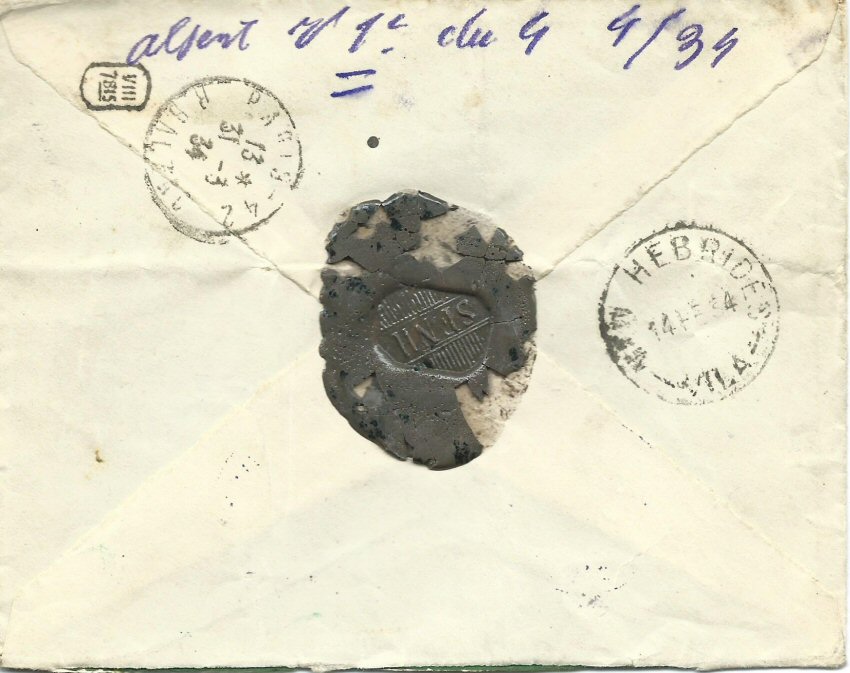
SFNH BUCEPHALE cover to France reverse
SFNH BUCEPHALE cover to France reverse

The cancels and the registration cachet are applied in violet.
The registration cachet is Goyns-Klinger Type NR12 which was so far known only from 1935 until 1937. It was located on the Messageries Maritimes S.S. BUCEPHALE.
The postmark seems to be a Goyns-Klinger Type PM7B at the first glance. We will see below that this cannot be correct.
The letter was sent registered to Madame Marie-Rose Vibert, 235 rue du Faubourg Saint Honoré, Paris XVII, A RRt (XVII arrondissement). The sender
made an error here as the rue du Faubourg is situated in the No. VIII arrondissement and not XVII.
But "La Poste" knew in which arrondissement rue Faubourg was situated and the letter received an arrival cancel on reverse "PARIS 42 - 13 * 31-3-34 - R BALZAC"
from the Post Office at 10, Rue Balzac which was responsible for Paris VIII. and a postman's remark (together with a small
cachet VIII for the arrondissement and 7 BIS) for the number of the delivery tour) that the addressee was absent on 1 April 1934.

So which ship carried this letter to Europe. Let me put the cart before the horse: which French ship reached Europe so the letter was in Paris on 31 March?
Maybe the Messageries Maritimes steamer COMMISSAIRE RAMEL, 10061 tons, Capt. Guerrine, which left Sydney on 14 February, called at Port Sudan on March 11 and
arrived in Marseilles on March 21.
So RAMEL is not a good choice: how would the letter have reached the RAMEL at the only other Australian harbour where she called, Melbourne
when it was cancelled Vila on 14 February? And: the letter would have been in Paris much earlier than on March 31.
So the cart behind the horse again: The first ship in Sydney from the New Hebrides after February 14 was the LAPEROUSE. She arrived in Sydney on February 24.
(BUCEPHALE returned to Sydney on March 16).
P & O S.S. MOLDAVIA, 16556 tons, Capt. C.H. Allin, left Sydney on February 21. This could be o.k. as mails were transferred by train to West Australia.
MOLDAVIA called at Perth on March 5. This would have been fine for mail by train from Sydney after February 24. Colombo March 14, Bombay March 19,
departure from Port Said March 27 and arriving in Marseilles on April 1 are fine dates. Mails were placed on train in Italy supposedly Brndisi or Naples and arrived in Paris
via the Mont Cenis tunnel earlier than the ship in Marseilles.

This remarkable cover shows a postmark which has not been detected as unknown so far as it is quite similar to the known ones. It is very probable that more items with
this postmark exist in collections of New Hebridean postal history but have been undiscovered because of the affinity to common postmarks.
You may want to look carefully at your items: maybe another piece can be found!
The left postmark was applied on reverse at VILA Post Office on 14 February 1934. The 3 March 1934 PM7B sample shows the same properties: the typical short left
leg of the "NEW" - N, the broken circle above the H of HEBRIDES and others. So this backstamp is well defined as PM7B.
An overlay graphic can document all this:
This is very clear including the gaps in the circle. The backstamp is indeed a PM7B.

1934-02-14 VILA backstamp Type PM7B
1934-02-14 VILA backstamp Type PM7B
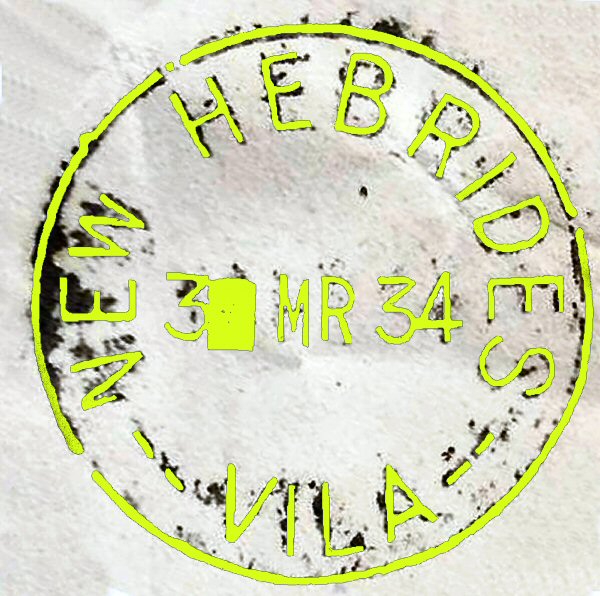
Type PM7B (yellow) on backstamp
Type PM7B (yellow) on backstamp

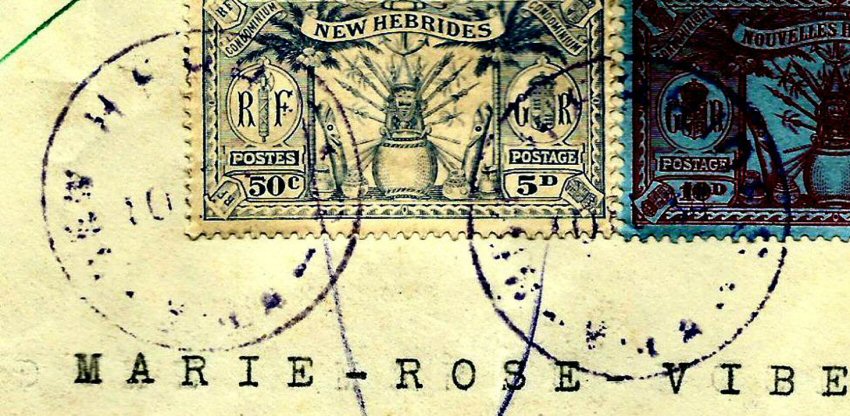
1934-02-10 cancelled stamps
1934-02-10 cancelled stamps (graphically enhanced for better visibility)
Now to the front of the cover:
It is franked with a French 1925 10d/1F and an English 5d/50c stamp. The colonial letter rate for a 20g letter was (from 1927 to 1937) 50c for the letter
and 1F for registration. So the letter is correctly franked.
The registration cachet GK Type NR12 was carried on board the Messageries Maritimes steamer BUCEPHALE and was so far known from 1935 to 1937. To see it on
this cover expands the time range forward to this 10 February 1934 date.
The stamps are cancelled with PM7A at the first impression as the N of NEW is complete and has no short left leg. But this postmark was only know until 1932.
Looking closely reveals that there are no parts of the characters above and below the date slugs as it is normal with PM7A. The two dividers are both split so
it cannot be type PM7A.
So which other differences to the catalogised cancels can we see at a first glance?.
The Characters of the inscription are smaller than in PM/A and PM7B. The circle of the inscription such is of a smaller diameter and therefore the distance between
the characters and the outer circle is wider than in the other types. The date seems to be a bit less high han the 7A & 7B dates.
First I want to check the backstamp with the documented PM7B:
This is very clear including the gaps in the circle. The backstamp is indeed a PM7B.
Now the same test for the front cancels: I transferred the better lower left part of the right impression into the left impression and then
copied the PM7B (yellow) on this image:
The answer is a clear no. VILA more to the left and HEBRIDES more to the left so this is not a question of rotation angle. The postmarks are
different.
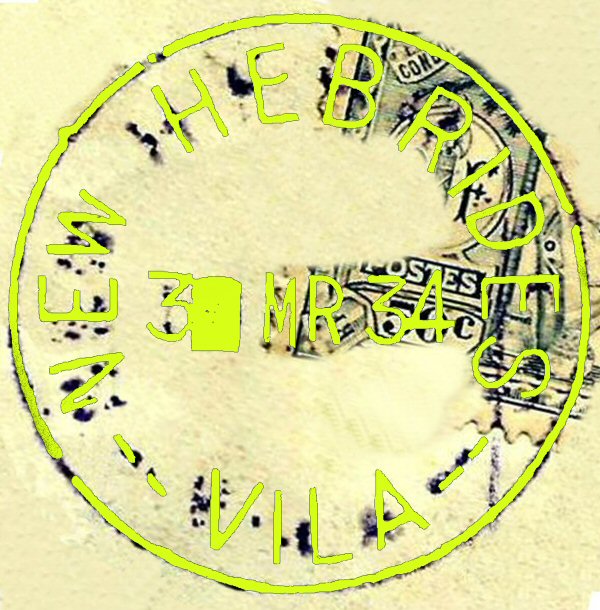
Type PM7B (yellow) on frontstamp
Type PM7B (yellow) on frontstamp
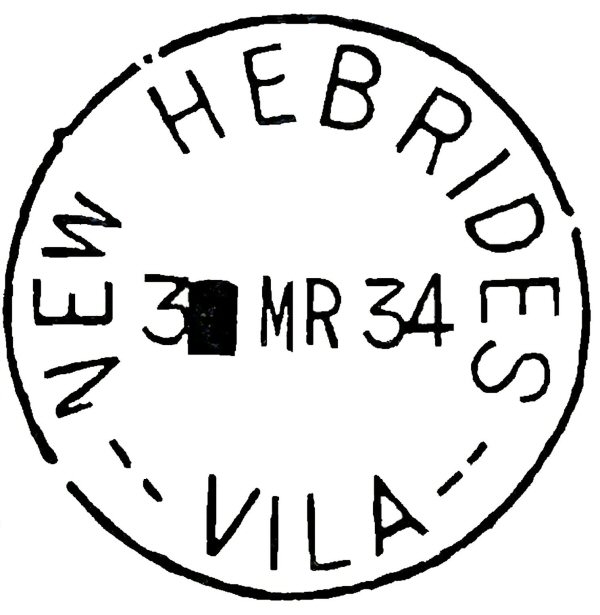
Type PM7B
Type PM7B
The next question would be if possibly GK Type PM/a has been transferred on the BUCEPHALE. It is know to be used from 1927 until 1932.
I copied the PM7A (yellow) on this image:
The result is much better. The answer is not easy. All charcters of PM7A seem to be much bigger.
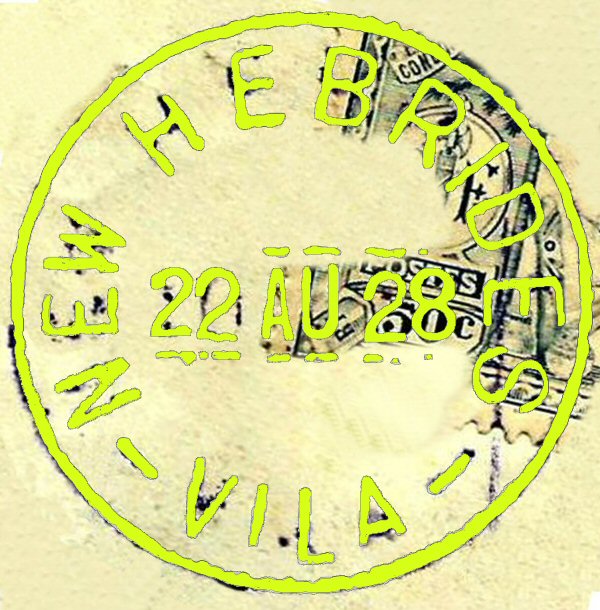
Type PM7A (yellow) on frontstamp
Type PM7A (yellow) on frontstamp
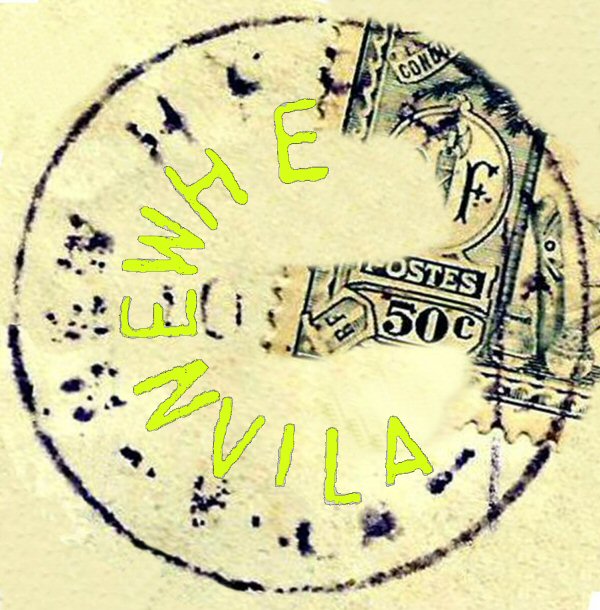
Type PM7A (yellow) on frontstamp
Type PM7A (yellow) on frontstamp
Here are both side by side: All charcters are at the same position. But the E of NEW is sloping to the left on this cover postmark, in PM7A it is strictly
horizontal. The right top leg of the H is short in PM7A - here it seems to be longer even with all characters being much smaller than in PM7A.
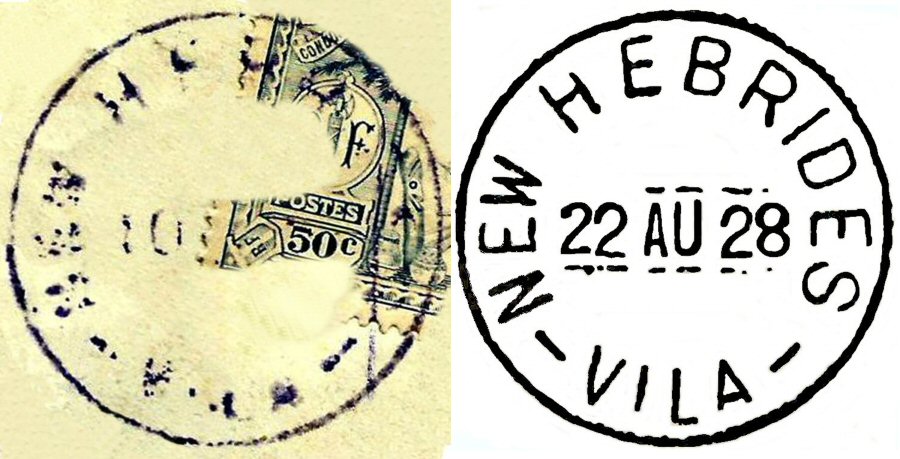
Front postmark plus PM7A
Front postmark plus PM7A
I will look for other copies of this postmark. At the moment I'd say I call it Type PM7A(Bu) (Bu) for BUCEPHALE.




















